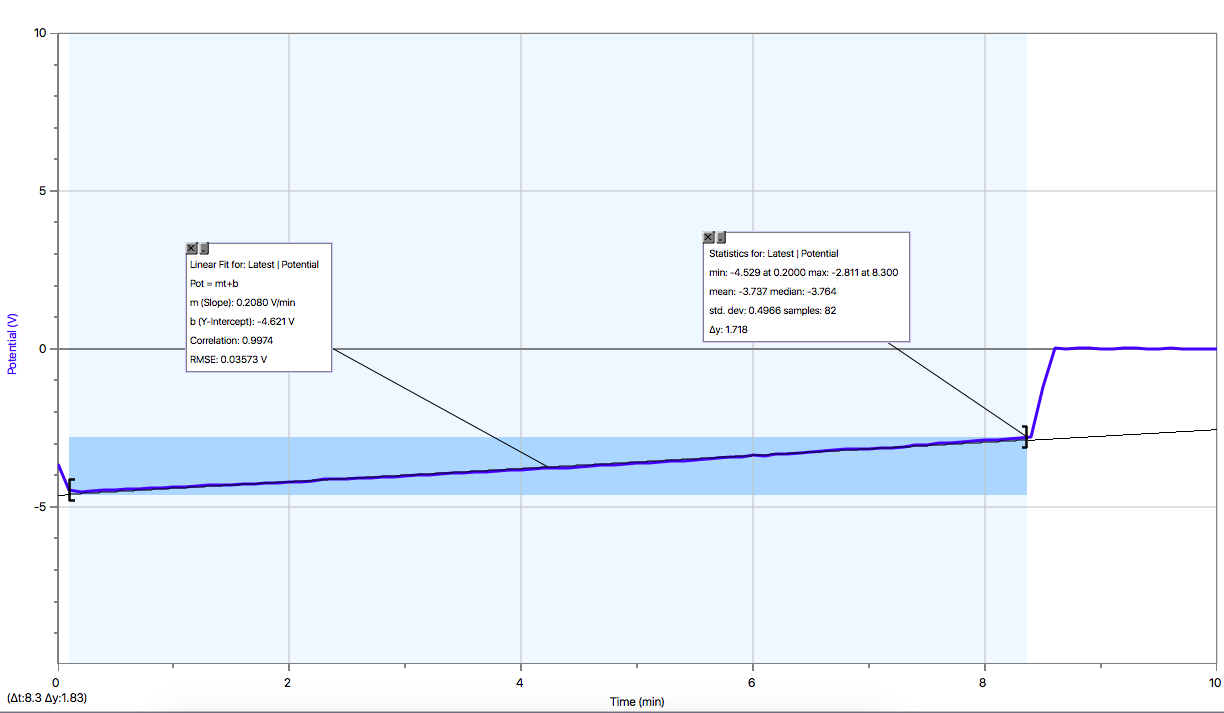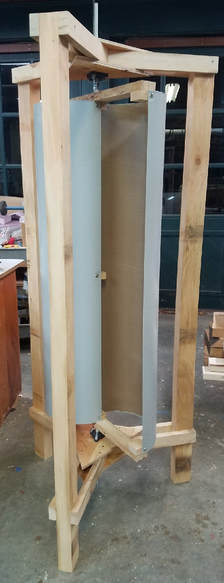 In an effort to evaluate the potential of the generator on the turbine to power an electrical device such as a lightbulb, we graphed the voltage output over a span ten minutes. The generator produces electricity as water spins an impulse turbine (known as a pelton wheel). From the data, we concluded that the voltage varies directly with the pressure. As the pressure decreased in the 5 gallon water tank, the voltage decreased at an average linear rate of -0.2080 volts per minute. The maximum voltage output with less than 5 gallons of water running through the system was 4.529 volts and the minimum was 2.811, at which point the voltage rapidly decreased to zero. It's possible that the turbine cannot generate any voltage below 2.811. The generator, however, can likely output more voltage with a larger volume of water. Note: the voltage appears negative on the graph because the alligator clips running into the data collection software were switched.
We have officially begun building the wind turbine. We locally sourced pine for the structure of the turbine, bringing the lumber cost to virtually nothing. We have used a cardboard sonotube (intended for cement pouring) as the blades fixed to two bearings mounted on plywood nailed to the pine structure. What we are not sure of yet is whether the structural support provided by the pine will inhibit the rotation speed of the sonotube. The turbine is currently about six feet tall. I plan on posting more photographs and sketches after the initial test of the blades.
|
Research TeamMattheus Carpenter Archives
April 2018
Categories |

 RSS Feed
RSS Feed